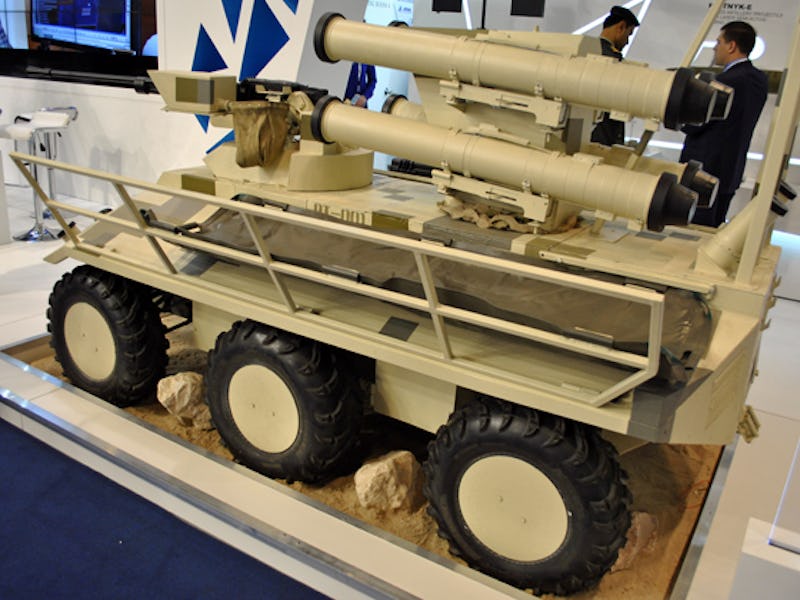When it comes to military unmanned ground vehicles (UGV), the biggest steps forward in actual use are not coming from the world’s leading military powers. Previously, an armed drone was seen rolling out with Iraqi militias near Mosul, and now the military in Ukraine is considering deploying a drone tank of its own. It’s a development that could lead to the first robot-on-robot combat, or the first confirmed, direct kill by a ground-based military robot.
We tend to think of advanced military technology as the sole domain of the super-power, but unmanned driving tech is becoming more mundane by the day, and with nuclear weapons in play, large powers tend not to do much shooting at one another. As smaller nations acquire increasingly available drone technology, that technology is vastly more likely to actually engage in real-world combat.
The vehicle itself is called the Fantom, a sturdy little 6x6 remote control vehicle with a surprisingly heavy loadout. In addition to the cameras that allow it to drive and spot targets for snipers and artillery, it’s got four anti-tank missiles, and a 12.7mm machine gun. Like previous ground vehicles, this is likely going to be a corner-peeker by nature; ground vehicles are quite bad at dodging rocket-propelled grenades, and for now they function mostly to project soldiers’ eyesight into areas the soldiers themselves couldn’t safely go. If they happen to be able to fire off a missile while they’re there, all the better. The tank is allegedly amphibious (we’ll see…) and it even has outlets for soldiers to change their various pieces of electronic equipment.
Unmanned ground vehicles have never directly killed a person during a military operation, so far as we know, but as mentioned they have been used for target spotting as part of lethal overall operations. The U.S. military has a number of ground drones, but it’s not a major source of investment; the U.S. already owns the ground whenever and wherever it wants to, and with America’s enormous wealth to spend, it’s air power that seems most likely to maintain that advantage. Below, check out a bunch of Iraqi militia fighters (note the balaclavas) show off likely-Iranian-made drone tech. The drones seem to only sort of work.
Smaller powers, from small states to terrorist organizations, could see a greater return on unmanned ground technology than major military nations. This was seen in a rather exaggerated sense during a dramatic shootout between police and an anti-government terrorist, last year; with few resources available, and less time, the police jury-rigged a bomb disposal robot to kill the shooter with a grenade. This was the first known fatality of its type, but as a non-military strike that was far enough outside police procedure to provoke a significant public backlash, it doesn’t seem like a foreshadowing of any coming change in U.S. policy.
Ground vehicles are highly available, and relatively easy to make remote-controlled — meaning we should not be surprised when they arise from the world’s most desperate situations. In Iraq, it seems that nationally unaffiliated locals are pushing unmanned ground tech forward — in Ukraine, it could be this military sale that does the same, or that could end up being a bunch of locals, too.
Regardless, it’s no longer possible to think that it’s just the world’s largest powers who have the sole power to dictate the future of war. They opened the box — now powers with far less to lose are looking inside, and making us aware of what they find.
